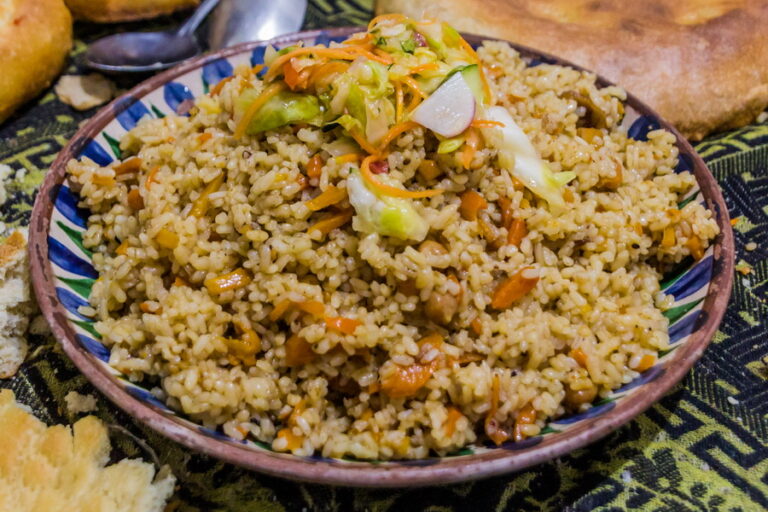Introduction: Tajik cuisine and its staples
Tajik cuisine is a vibrant and diverse culinary tradition that has been shaped by the country’s geography, history, and cultural influences. The cuisine is characterized by a rich blend of flavors and ingredients, from aromatic spices and herbs to succulent meats and fresh vegetables. Staples of the Tajik diet include rice, meat, dairy products, and bread, which is an integral part of the culinary heritage and identity of the country.
The significance of bread in Tajik culture
Bread holds a special place in Tajik culture, as it is seen as a symbol of hospitality, generosity, and community. In Tajikistan, bread is often referred to as “ob” or “lepyoshka” and is considered a staple food that is consumed at almost every meal. Bread is also a cultural artifact that reflects the history and traditions of Tajik society, with many different varieties and styles of bread that have evolved over time.
The types of bread commonly consumed in Tajikistan
Tajikistan is home to a wide range of breads, each with its own unique flavor, texture, and cultural significance. Some of the most popular types of bread include “non,” a flatbread that is baked in a clay oven and served with butter or jam; “kulcha,” a soft, fluffy bread that is often stuffed with meats or vegetables; and “somsa,” a savory pastry that is filled with meat, onions, and spices. Other popular breads in Tajikistan include “girda,” “patyr,” and “chapatti.”
Bread as a vehicle for traditional Tajik dishes
Bread is also an important ingredient in many traditional Tajik dishes, serving as a vehicle for sauces, dips, and stews. For example, “osh,” a hearty lamb and rice dish that is considered the national dish of Tajikistan, is often served with a side of bread. Bread is also used to make “shashlyk,” a popular grilled meat dish that is marinated in spices and served with fresh vegetables and bread.
The role of bread in Tajik hospitality and social customs
In Tajik culture, bread is an important part of hospitality and social customs. Guests are often greeted with a loaf of bread and a cup of tea, and bread is often shared as a sign of goodwill and friendship. In addition, bread is often used as a centerpiece for traditional meals and celebrations, such as weddings and religious festivals.
Conclusion: Bread’s integral role in Tajik cuisine and identity
In conclusion, bread plays a vital role in Tajik cuisine and culture, serving as a staple food, an ingredient in traditional dishes, and a symbol of hospitality and community. With its rich history and diverse flavors, bread continues to be an integral part of the culinary heritage and identity of Tajikistan. Whether enjoyed on its own or as part of a delicious meal, bread is a true culinary treasure that reflects the traditions and values of Tajik society.

